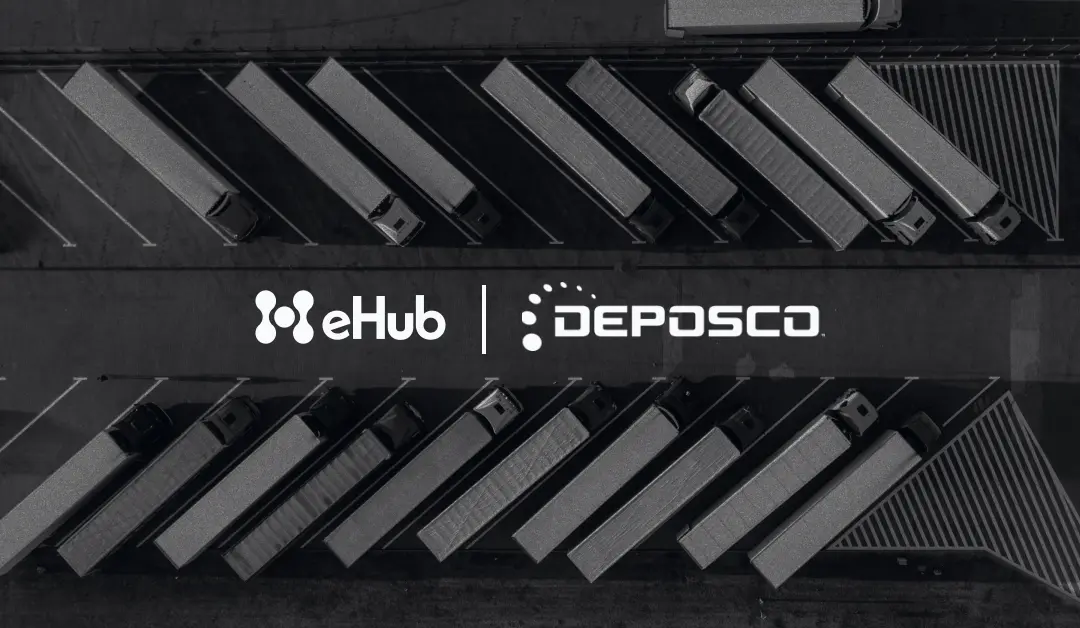The logistics landscape is evolving rapidly, with businesses striving to meet ever-increasing customer demands. At the recent Deliver America logistics conference, Adam McCoy, COO of eHub, took center stage alongside Nathan Goobie, Director of Small Parcel and Shipping Solutions at Techdinamics, to explore a game-changing strategy: Hybrid Fulfillment.
In their joint keynote presentation titled “Achieving Amazon-Level Success: The Power of Hybrid Fulfillment,” Adam and Nathan shared invaluable insights into how this strategic approach is shaping the future of e-commerce fulfillment.
What is Hybrid Fulfillment?
Hybrid fulfillment combines the strengths of in-house fulfillment with third-party logistics (3PL) providers to create a scalable, flexible solution for businesses. This powerful strategy allows companies to scale efficiently while maintaining control over their core competencies.
Key Takeaways from the Session:
Unpacking Amazon’s Fulfillment Secrets: Adam and Nathan discussed the methods that have made Amazon a leader in e-commerce. By analyzing and adapting Amazon’s fulfillment model, businesses of all sizes can position themselves for growth and success.
Innovative Approaches to Hybrid Fulfillment: The session highlighted how businesses can tailor hybrid strategies to their unique needs, ensuring they benefit from the best of both worlds – in-house fulfillment and 3PL partnerships.
Trends Shaping the Fulfillment Industry: Adam and Nathan also discuss emerging trends influencing the fulfillment landscape, helping attendees stay ahead in an increasingly competitive market.
Why Hybrid Fulfillment Matters:
The benefits of hybrid fulfillment go beyond just scalability and flexibility. As Adam and Nathan emphasized, this strategy helps businesses:
Increase Scalability: Adapt to fluctuating demand without the burden of infrastructure investment.
Cut Costs: Leverage 3PL providers to manage warehousing and fulfillment, avoiding large upfront expenses.
Boost Efficiency: Focus on core business functions while ensuring seamless order fulfillment.
Enhance Customer Experience: Deliver faster and meet customer expectations with a broader inventory reach.
Watch the Full Session
Want to dive deeper into the conversation? The entire keynote session, filled with actionable insights and strategic recommendations, is available to watch. Don’t miss this opportunity to learn how you can implement hybrid fulfillment and achieve Amazon-level success.
Ready to Transform Your Fulfillment Strategy?
eHub is here to help. Contact us today to learn more about how hybrid fulfillment can work for your business.
Summarized Transcript:
—
“Achieving Amazon-Level Success: The Power of Hybrid Fulfillment” Session
—
**Dominic:**
We would like to welcome you all to the session *Achieving Amazon-Level Success: The Power of Hybrid Fulfillment*. I have two bios for you here.
We have Nathan, who’s an experienced leader in IT and supply chain, focusing on parcel solutions and operational growth. He’s currently serving as the Director of Parcel and Shipping Solutions at Techdinamics.
I have Adam McCoy here, who’s an accomplished product leader with over 15 years of experience in product conception, launch, and management. In 2023, Adam transitioned to the role of COO at eHub. They used to be mortal enemies, but now they’re working together to present to you their feelings of love and collaboration.
Please give a silent clap for them. Look at that, everyone’s silently clapping, love it! Okay, let’s jump right into it.
—
**Adam McCoy:**
Thanks, Dominic. So today, we’re going to focus on achieving Amazon-level success through hybrid fulfillment. We’ll cover different topics, including defining hybrid fulfillment, touching on automation, technology, and the network required for this setup. By the end of today, we want you to understand what hybrid fulfillment is and how it can help you compete with Amazon or achieve success similar to Amazon.
—
**Nathan Goobie:**
Great, thanks, Adam.
Amazon has had incredible growth, and it’s amazing to watch their expansion. To put things into perspective, the Las Vegas Metro area has just under 3 million people. If you cut that in half, it roughly represents the number of employees Amazon has. Their footprint is even more impressive. Amazon has 623 million active square feet.
For comparison, we’re in the Horseshoe Casino, which has about 68,000 square feet. So, Amazon’s footprint equals over 9,000 Horseshoe Casinos!
Even more impressive than their footprint is what they’ve done from a logistics perspective. Amazon created an industry standard in logistics. They can deliver to 72% of the U.S. within 24 hours, which gives them a massive e-commerce advantage.
—
**Adam McCoy:**
How many of you have purchased a product from Amazon simply because it would arrive quickly? Almost every hand goes up. Amazon has built a competitive advantage around fast shipping, and that’s a core part of their success.
—
**Nathan Goobie:**
It’s fascinating how, regardless of size, every brand faces the same challenge—reducing delivery times. Whether you’re a small retailer or a large business, we’re all trying to get products to customers faster and more affordably. Today, we’ll discuss how hybrid fulfillment can help tackle these challenges, with scalability and flexibility being key.
—
**Adam McCoy:**
Nathan made a great point. Whether you’re a big or small company, the problems can be similar, just at different scales. One big challenge Amazon has tackled better than others is the regulatory landscape, especially in Europe, where fulfillment becomes complicated due to varying tax codes and compliance requirements.
Today, we’re going to discuss strategies for hybrid fulfillment and how it can help overcome these challenges.
—
**Nathan Goobie:**
Let’s dive into what hybrid fulfillment is. Imagine you’re a brand fulfilling orders in-house on the East Coast. With hybrid fulfillment, you can partner with a 3PL on the West Coast to serve that region more efficiently. This allows you to scale while taking advantage of your strengths and those of your partners.
—
**Adam McCoy:**
I love the hybrid car analogy—balancing the benefits of gas and electric cars. Hybrid fulfillment is about getting the best of both in-house and 3PL fulfillment. You scale without losing control or needing significant capital investments.
—
**Nathan Goobie:**
Absolutely. And let’s not forget the importance of technology. It’s what ties everything together. Whether it’s automation or inventory management, having the right tech stack is key to making hybrid fulfillment work seamlessly.
—
**Adam McCoy:**
Technology is critical, especially when managing multiple locations. Whether it’s forecasting inventory or measuring performance, analytics and transparency are essential for success.
—
**Nathan Goobie:**
We’ve also seen companies like James Cargo, who started in the UK, expand globally using hybrid fulfillment. By partnering with 3PLs in the U.S. and Canada, they’ve managed to offer fast and affordable shipping while leveraging the same technology across locations. It’s a perfect example of how hybrid fulfillment enables brands to achieve Amazon-level success.
—
**Adam McCoy:**
Another great example is Gab Wireless. They use hybrid fulfillment to handle products requiring serialization. Instead of managing everything in-house, they partnered with a 3PL specializing in serialized products, allowing them to scale without increasing capital expenditures.
—
**Nathan Goobie:**
Exactly. It’s all about delivering a five-star experience to your customers—reducing shipping times, improving efficiency, and building a network that supports your business goals. With the right hybrid fulfillment strategy, you can compete with even the biggest players in the industry.
—
**Dominic:**
Thanks to Nathan and Adam for sharing those insights. Now, let’s open it up for questions!
—




